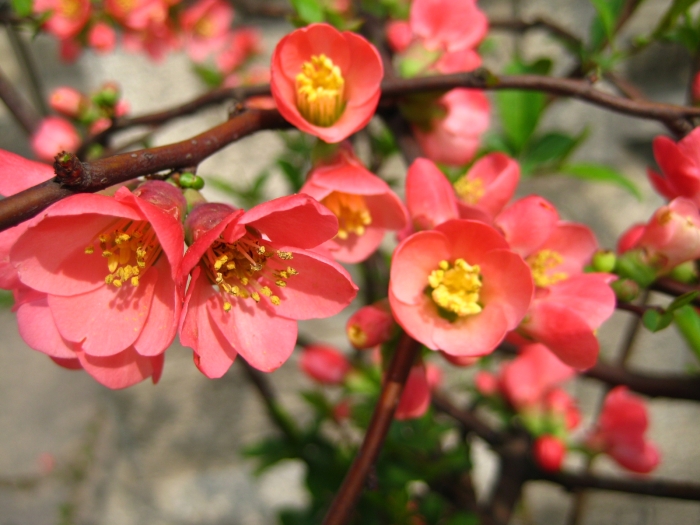Flowering Quince
(Chaenomeles speciosa)
Flowering Quince (Chaenomeles speciosa)
/
/

清水五月 (Shimizusatsuki)
CC BY-SA 3.0



















































Estimated Native Range
Summary
Flowering quince is valued for its early blooms, which can bring color to the garden when little else is flowering. It is often used as an informal low hedge or in mixed borders for its attractive flowers and branching structure. The plant is adaptable to a range of soil types, provided they have good drainage, and it can tolerate both full sun and partial shade. While it is generally easy to maintain, it may require pruning to shape and to remove dead or tangled branches. Flowering quince can suffer from fungal diseases such as apple scab and fire blight, and may also be prone to scale insects and mites.CC BY-SA 4.0
Plant Description
- Plant Type: Shrub
- Height: 6-10 feet
- Width: 6-10 feet
- Growth Rate: Moderate
- Flower Color: Red
- Flowering Season: Spring, Winter
- Leaf Retention: Deciduous
Growth Requirements
- Sun: Full Sun, Part Shade
- Water: Medium
- Drainage: Slow, Medium, Fast
Common Uses
Bank Stabilization, Bee Garden, Bird Garden, Border Plant, Butterfly Garden, Deer Resistant, Drought Tolerant, Edible*Disclaimer: Easyscape's listed plant edibility is for informational use. Always verify the safety and proper identification of any plant before consumption., Erosion Control, Fragrant, Hedges, Hummingbird Garden, Potted Plant, Rabbit Resistant, Salt Tolerant, Showy Flowers, Street Planting
Natural Habitat
Woodland margins, thickets, and slopes in eastern Asia
Other Names
Common Names: Chinese Quince, Flowering-Quince, Japanese Quince, Chinese Sierkwee, Stor Rosenkvitten, Boke, Mu Gua, Myeongjanamu, Tie Geng Hai Tang, Zhou Pi Mu Gua, Scheinquitte
Scientific Names: , Chaenomeles speciosa, Chaenomeles lagenaria, Cydonia speciosa, Cydonia lagenaria, Choenomeles speciosa, Choenomeles lagenaria, Pyrus speciosa, Chaenomeles angustifolia, Chaenomeles cardinalis
GBIF Accepted Name: Chaenomeles speciosa (Sweet) Nakai